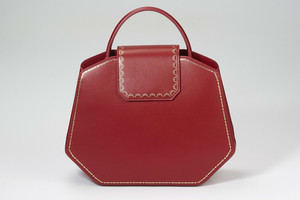Interview: Kei Toyoshima, New Creative Director at 66°North
Written by Linnéa Ruiz Mutikainen by Sandra MyhrbergOdalisque Magazine, has had the opportunity to speak to Kei Toyoshima, the new Creative Director at 66°North about legacy and his forthcoming projects.
The Japan-born fashion forerunner, first entered the global stage in 2008. Working with brands such as Bottega Veneta, Louis Vuitton, and Haider Ackermann. Now, he plunged into the talked about Icelandic outwear brand, 66°North.
Over the last few years, 66°North has seen quite the resurgence. Previously regionally strong, the brand embark on an exciting journey, shaping its identity as a modern brand of contemporary measure. Founded in 1926, equipped to cater protective clothing needs of Icelandic fishermen and workers alike, the now B-Corp and Carbon neutral establishment now attracts both outdoor aficionados and fashion trailblazers.
Toyoshima himself discovered 66°North when travelling. “I visited Iceland a few years ago. That’s when I first heard of the brand. It’s truly synonymous with Iceland and I found beauty in that. ”When returning for a second visit, he met Helgi Runar Oskarsson, CEO of 66°North. Immediate similarities between Toyoshima’s homeland, Japan, and Iceland sparked inevitable conversation. “We both experience extreme nature. I found it particularly interesting from a style perspective. As islanders, we protect ourselves with layering.”
When asked about reasoning behind the career-defining change, Toyoshima immediately points at expertise, design, and the balance between both, as his most recent consultancy stint at Louis Vuitton continues. “Working with both 66°North and Louis Vuitton's menswear department creates a mix of luxury and technical industry. My added value is style and design. I see plenty of potential by simply infusing my luxury brand experience, especially in order to expand the
collection and its customer base.
”Toyoshima is aware of functional importance, yet with an exclusive eye. “66°North's core collections mainly consist of historic staples. But they can be worn both in the mountains and pulsating city streets. Today, functional apparel is frequently seen on the runways, but most
fashion houses can’t really compete with with 66°North. We offer technical and down garment production, with our own factories.”
His well-anticipated inaugural official collection at the creative helm of 66°North will be presented for the AW24-season. Meanwhile, Toyoshima oversees campaign imagery, strengthening the visual image of the brand. “My vision is to bring fashion and luxury to the collection while staying true to the brand's DNA and heritage. Quality and performance are the most important ingredients of function and durability. The longer our products last, and are useful, the more effectively 66°North can protect its customers and our earth.”
Moving forward, his next substantial project will examine quintessential brand identity and belonging. Connecting the past with the present is to be expected, a vision running deep in 66°North's veins. “I aspire to make creations that seamlessly transcend time and gender. Merging the past 99 years with the next 99 years,” he explains. The number 99 is paramount, serving a vivid testimony to brand heritage. “It’s 66 upside down. Although it may sound strange, it represents the place we first started. Our attitude of always aiming higher.”
Elements of sustainability sit nicely alongside, infusing all launches. “Sustainability indicates timeless design. A current uniform that accompanies your lifestyle. We want our vision to be genderless, timeless. I imagine a future where people will love us for a long time, handing us over to the next generation.”



























